Fracking for Shale Gas Pollutes Water, Leads to Earthquakes
Hydraulic Fracturing of Natural Gas
By Staff
British Columbia Women’s Institute
The new wave in oil and gas exploration in the last ten years has certainly been the use of hydraulic fracturing (fracking) of rock layers deep beneath the earth’s surface for the purpose of releasing natural gas.
This is a process whereby huge quantities of ‘slickwater’ are injected into a well at pressures so high that the water fractures the shale rock layers at several places along the horizontal leg of the well. This releases the gas reserves. The same well can be re-fractured multiple times as the gas supplies decrease, thus greatly reducing the cost of extraction.
This technological breakthrough has opened new areas for production that until now were too difficult or expensive to extract. It has also reduced the physical impact of such resource extraction, since hydraulic fracturing is combined with horizontal drilling procedures that use one wellsite to drill multiple wells deep down and then horizontally for up to two kilometers deep underground.

A Primer for Understanding Canadian Shale Gas November 2009 (Source: National Energy Board, Canada).
From an industry perspective this is exciting news: lower extraction costs, lower industrial footprint, and access to new and vast resources. It has created a boom in the natural gas industry. However, there are serious environmental problems with hydraulic fracturing that are impacting Canada’s water resources. These include water requirements, exposure to harmful chemicals used in fracking, and management of contaminated waste water.
British Columbia is to be especially concerned, as the largest Canadian shale gas developments are occurring in our back yard.
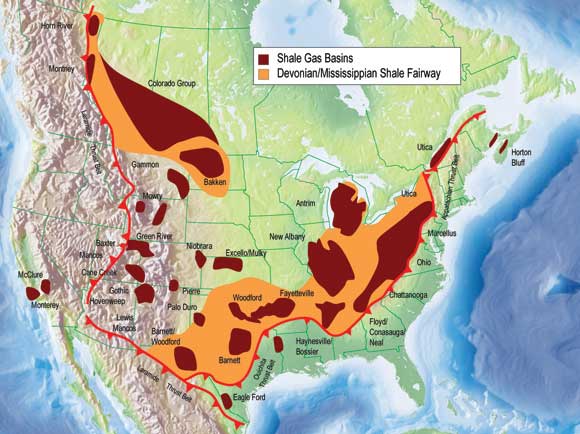 Western Canada’s richest shale gas sources are the Horn River Basin and the Montney tight gas region, both in Northern BC (note: the others may be large, but not as rich.) They are expected to add a projected 100 million m3/day of natural gas in the next ten years.
Western Canada’s richest shale gas sources are the Horn River Basin and the Montney tight gas region, both in Northern BC (note: the others may be large, but not as rich.) They are expected to add a projected 100 million m3/day of natural gas in the next ten years.
It is said that natural gas development in the coming years will make BC rich again. Greenmuze.com reports that ‘in 2008, BC took in a record $2.4 billion from these leases, which is now its biggest source of royalties’ income’ (April 19, 2010). It is also noteworthy that BC’s government allows companies to drill and frack natural gas wells within 100 meters of people’s homes.
Of major concern is the volume of water need for fracking.
It is typical for a frack job to use over one million cubmic meters (m3) of water for one job. Water typically comes from rivers, lakes, underground aquifers, or private/municipal sources.
With 12,000 fracked wells being planned per year, this huge loss of water for our eco system structure is a potential natural disaster.
Within the last year both Canbriam Energy Inc, and Talisman Inc, have applied to the BC Provincial government for long-term licences to withdraw a combined 7.3 billion liters of water (1%) annually out of Lake Williston, a reservoir which ends at a hydro dam that gives BC one third of its electricity.
Who else will get access in the coming years? No public consultation is being planned. There are also no studies done of Canada’s underground water supply. No one knows the extent of any underground lakes, rivers, or other water bodies. How much water is stored underground? Where does it come from? Where does it go?
With fresh water supplies becoming one of the world’s dominant human issues, is this indiscriminate use of our fresh water wise? The National Energy Board (NEB) which is Canada’s regulatory body, in its 2009 report on shale gas development in Canada made the short comment that “There is potential for a heavy draw on freshwater resources because of the large quantities required for hydraulic fracturing fluid”. There was no mention of any need for research into this issue.
Secondly, the frack water is mixed with an unknown cocktail of chemicals at the rate of 5000 to 20,000 kg per million L (.5 to 2%) to facilitate gas flow and prevent corrosion of equipment.
The mix of these chemicals is allowed to be a ‘trade secret’ and no government regulations require their release. Drilling companies have provided government officials with a list of over 200 different chemicals used.
In a report to the Council of Canadians, Dr. Theo Colburn found that
- 94% of the fracking chemicals in her database are associated with skin, eye and respiratory harm,
- 93% with harm to the gastrointestinal system, and
- 83% with brain and nervous system effects (p.14).
Only an average of 50% of frack water is recovered. The other water remains underground. The concern is when people come in direct contact with these fluids or when these chemicals get into freshwater supplies. The new fractures can connect with other geological conduits.
There is ample documentation of newly contaminated well water near fracked drilling sites that contain hazardous chemicals typically found in frack water.
Jessica Ernst, a biologist and environmental consultant to the oil and gas industry, had this happen to her in her home town of Rosebud, AB. In an interview with Joyce Nelson for Greenmuze, she says
“Encana told us ‘we would never fracture near your water’ but the company fracked into our aquifer in that same year [2004]. By 2005, my water began dramatically changing, going bad. I was getting horrible burns and rashes from taking a shower, and then my dogs refused to drink that water. That’s when I began to pay attention.”
Ernst goes on to say that [groundwater contamination from fracking]
“is pretty widespread in Alberta, but they are trying to keep it hidden.”
Greenmuze reports that
“Canada has no national water standards and conducts little information gathering about groundwater” (Greenmuze.com, Mon. 19 April 2010).
Typically, no drilling company will take responsibility for this contamination unless forced to, and court proceedings are ongoing in many States such as California, Texas, and Pennsylvania.
The third concern is the treatment of the recovered frack water.
This ‘brine’ contains not only the cocktail of chemicals put into the frack water, but is also typically high in salts, and contains volatile compounds such as benzene and toluene; semi-volatile compounds such as naphthalene; glycols; metals; and radioactive substances such as radium.
None of this water ever makes it back into the freshwater system. Cleaning this waste water is a rapidly growing industry in itself. After some cleaning it is either injected underground into wells designated for that purpose, stored in huge open ponds, or where economically feasible is recycled in another frack job.
[Read the article below on the now recognized fact that this high-pressure injection of water into porous rock deep below the earth surface leads to earthquakes.]
In October 2010 BC’s new Oil and Gas Activities Act came into effect.
It contains regulations that specifically address the drilling of shale gas wells and fracking. Water stewardship is also addressed, and of course companies are required to dispose of chemicals and waste water safely. It remains to be seen how closely these regulations will be followed, and how the BC Oil & gas Commission will interpret the wording in a dispute.
A Canadian Shale Gas Summit took place April 27 – 29 2011 in Calgary, AB for those interested in investing in the industry. Senator Richard Neufeld, who is a known proponent of shale gas exploration, was one of the main speakers.
Environmental concerns were not on the agenda, and neither were they on the agenda of the Canadian Institute’s 7th Annual Shale Gas Symposium, held in Calgary in January 2011. It is of dire concern that our governments are not forcing the exploration companies to drill with more care for our water ecosystem.
So what can be done about this?
I believe we must recognize that the hydraulic fracturing method is here to stay. What we need to work out is the balance between resource extraction, the price we are willing to pay for our natural gas/products, and the environmental water issues as mentioned in this essay.
Action ideas:
- Get informed about the issue. Check out the websites mentioned in the attached bibliography. Find out what your local community is doing with regards to its fresh water use policies. Will you be the advocate for safe drinking water for us, and for our future people?
- All of us appreciate and desire the comforts of our industrialized world. Living in a resource-driven province, we need to ask ourselves some hard questions: What are we willing to give up for the loss of provincial revenue if we force a moratorium on hydraulic fracturing? How are we going to ask the Government of British Columbia to pay the bills?
- At the same time, we the people of British Columbia, must fight for the safety of our water. We must ask for more stringent controls on how these wells are drilled, where the water comes from for fracking, and how the water is cleaned and stored. Write a letter to your local MP, with a copy sent to the Minister of Natural Resources, and to Premier Christy Clarke. Send your letter to the editor of your local newspaper.
——————————————————–
Bibliography and resources
- http://www.share.ca/files/Hydraulic_Fracturing__Investor_Brief.pdf
- www.nytimes.com/2011/03/02/us/02gas.html?hp
- http://www.cbc.ca/landandsea/2011/04/nb-gas.html
- http://www.encana.com/news/topics/hydraulicfracturing/
- http://www.canadaviews.ca/2011/04/20/scope-of-hydraulic-fracturing-review-available-for-public-comment/
- http://www.theguardian.pe.ca/Opinion/Letters%20to%20editor/1969-12-31/article-2076380/This-calls-for-a-moratorium/1
- http://ridgelinecanada.com/w_uoil_gas/
- http://www.scientificamerican.com/article.cfm?id=fracking-for-natural-gas-pollutes-water-wells
- http://www.greenmuze.com/climate/energy/2562-ugly-reality-of-fracking.html
- http://www.policyalternatives.ca/publications/monitor/frack-attack
- http://www.neb-one.gc.ca/clf-nsi/rnrgynfmtn/nrgyrprt/ntrlgs/ntrlgsdlvrblty20102012/ntrlgsdlvrblty20102012-eng.html
- http://www.neb-one.gc.ca/clf-nsi/rnrgynfmtn/nrgyrprt/ntrlgs/prmrndrstndngshlgs2009/prmrndrstndngshlgs2009-eng.html: A Primer for Understanding Canadian Shale Gas – Energy Briefing Note – November 2009 [PDF 7850 KB]
- http://ourwaterbc.ca/our-water-secretly-sucked-away-by-shale-gas-industry
- http://thetyee.ca/Opinion/2011/03/15/OurWaterSuckedAway/
- http://oilleader.com/2011/04/shale-gas-fracking-%E2%80%93-qa/
- http://www.ourfutureplanet.org/news/552
- http://www.thestar.com/opinion/letters/article/980119–shale-gas-fracking-is-safe
- http://thetyee.ca/Opinion/2011/04/20/FrackingToxins/
- http://www.conferensum.com/upcoming-conferences/oil-gas/canada/the-canadian-institutes-7th-annual-shale-gas-symp-(2159).upconf
Source: British Columbia Women’s Institute

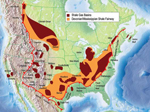

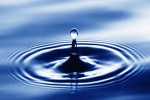
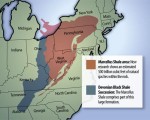
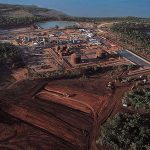
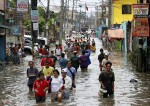

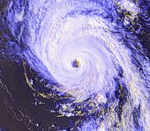
Comments
Fracking for Shale Gas Pollutes Water, Leads to Earthquakes — No Comments